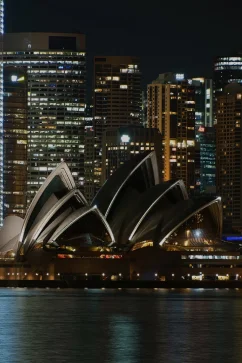NYC’s Cultural Treasures: Museums You Must See
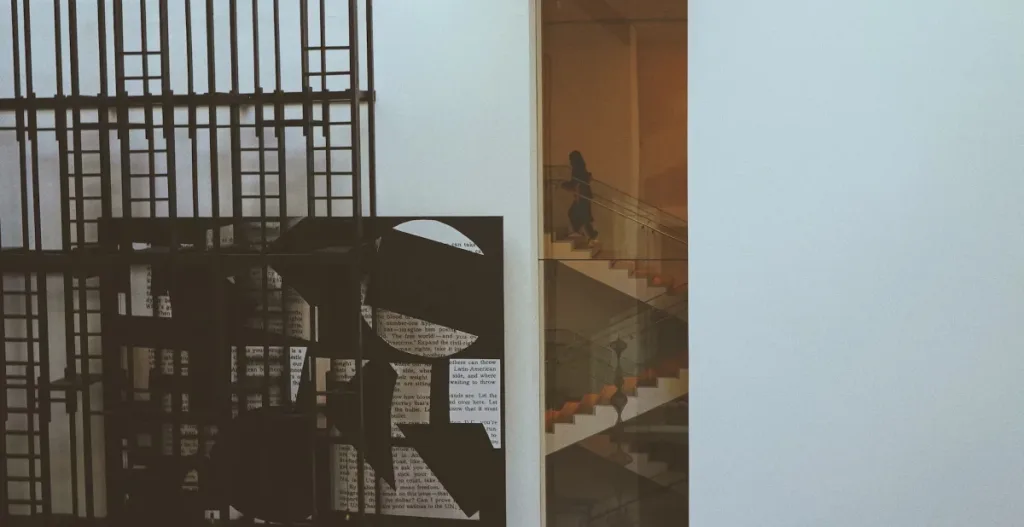
New York City is home to a wealth of world-class museums that house incredible collections spanning art, history, science, and culture. These museums represent just a fraction of the cultural treasures that New York City has to offer. Whether you’re interested in art, history, science, or culture, there’s something for everyone to enjoy in the city’s world-class museums.
The Met
The Metropolitan Museum of Art, often referred to simply as “The Met,” is one of the most iconic and prestigious art museums in the world. Located on the eastern edge of Central Park along Fifth Avenue in Manhattan, The Met has a rich history dating back to its founding in 1870.
Visiting The Met is not just an opportunity to view world-class art; it’s a journey through human history and creativity. Whether you’re a seasoned art enthusiast or a first-time visitor, The Met offers an enriching and immersive experience that continues to inspire and educate countless individuals from around the globe.
The Metropolitan Museum of Art, often simply referred to as The Met, is a testament to the enduring power of art, history, and culture to inspire and unite humanity. With its storied history, world-class art collections, architectural splendor, cultural significance, and prime location, it continues to be a beloved institution that invites visitors to embark on a journey through the ages and across the globe. A visit to The Met is an invitation to explore the boundless wonders of human creativity and to appreciate the beauty and diversity of our shared cultural heritage.
History
The Met’s story is one of visionary leadership and a commitment to making art accessible to all. It was founded by a group of American citizens, including artists and philanthropists, who aspired to establish a museum that would bring art and culture to the people of New York City. Since its inception, The Met has continuously expanded its collection and evolved its mission to serve as a global resource for the appreciation of art and culture.
Art and Exhibitions
The heart of The Met lies in its unparalleled art collections, which span over 5,000 years of human creativity. Visitors can explore masterpieces from diverse cultures and time periods, including ancient Egyptian artifacts, European paintings from the Renaissance to the present, Asian and African art, Islamic art, and much more. One of the museum’s most iconic pieces is Emanuel Leutze’s “Washington Crossing the Delaware,” a monumental painting that immortalizes a pivotal moment in American history. The Met also hosts a rotating array of special exhibitions that showcase the depth and breadth of its holdings while introducing visitors to new artistic perspectives.
Architecture
The Met’s architecture is as captivating as the art within its walls. The main building, designed by Calvert Vaux and Jacob Wrey Mould in the late 19th century, combines Beaux-Arts and Gothic Revival elements. Its iconic façade features grand entrances and intricate ornamentation. The Met Cloisters, located in Fort Tryon Park in Upper Manhattan, offer a serene escape to a medieval European monastery and gardens, providing a unique architectural experience.
Over the years, The Met has undergone expansions and renovations, including the recent Met Breuer building, which housed modern and contemporary art exhibitions before transitioning to The Met’s expanded modern and contemporary program within the main building.
Culture and Education
The Met is not merely a repository of art but a cultural hub that fosters education, inspiration, and creativity. It offers an array of educational programs, lectures, workshops, performances, and family-friendly activities. Its efforts to engage diverse audiences include collaborations with schools, community organizations, and artists-in-residence programs. The museum also maintains a robust digital presence, providing online resources, virtual tours, and educational materials to ensure that its cultural treasures are accessible to a global audience. The Met holds immense cultural significance as a custodian of human creativity, a promoter of cross-cultural understanding, and a guardian of historical memory. Its exhibitions and programs explore themes of identity, heritage, and the interconnectedness of cultures throughout history.
Location
The Metropolitan Museum of Art is at 1000 Fifth Avenue, New York, NY 10028, USA. The museum is easily accessible by public transportation and offers various visitor amenities, including dining options, a gift shop, and a rooftop garden with stunning views of the city.
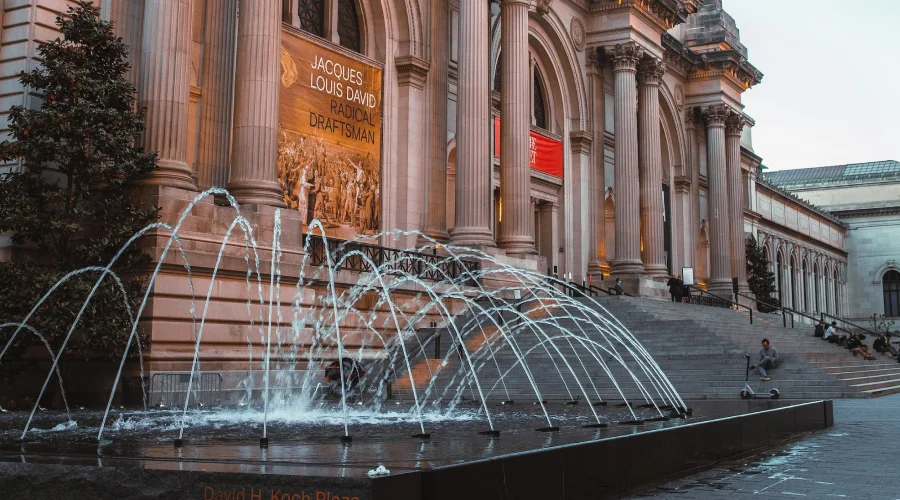
The MoMA
The Museum of Modern Art (MoMA) is a must-visit for modern and contemporary art enthusiasts. It boasts an impressive collection of works by artists like Picasso, Van Gogh, Warhol, and many others. Visiting MoMA is not just an opportunity to view exceptional art; it’s a chance to engage with the ever-evolving world of modern and contemporary art, challenge your perspectives, and gain insights into the artistic and cultural forces that have shaped our world. Whether you’re a seasoned art enthusiast or a newcomer to the art scene, MoMA offers a rich and thought-provoking experience.
History
MoMA was founded in 1929 by a group of influential individuals, including Abby Aldrich Rockefeller and Lillie P. Bliss. It was established with the goal of making modern art accessible to the public and fostering an understanding of contemporary artistic developments.
Art and Exhibitions
MoMA boasts an impressive and diverse collection of modern and contemporary art, including paintings, sculptures, drawings, prints, photography, design objects, and more. The collection spans from the late 19th century to the present day and features works by some of the most renowned artists in history, such as Pablo Picasso, Vincent van Gogh, Andy Warhol, Jackson Pollock, and many others. MoMA is home to some of the most iconic works of art, including Vincent van Gogh’s “Starry Night,” Salvador Dalí’s “The Persistence of Memory,” and Claude Monet’s “Water Lilies.” In addition to its permanent collection, MoMA hosts a rotating series of special exhibitions that explore various themes, artistic movements, and contemporary trends. These exhibitions often feature works on loan from other institutions and private collections.
Architecture
The museum’s main building was redesigned and expanded by architect Yoshio Taniguchi in 2004. Its minimalist design includes features like the soaring Abby Aldrich Rockefeller Sculpture Garden and an impressive central atrium. The museum has an extensive design collection, including iconic pieces of modern furniture and industrial design objects. It highlights the connection between art and everyday life.
Cultural Significance
MoMA has had a profound impact on the art world and contemporary culture. Its exhibitions and acquisitions have influenced the development of modern art, and it continues to shape the discourse surrounding contemporary artistic practice.
Location
The Museum of Modern Art (MoMA) in New York City is located in the Midtown Manhattan area. Its specific address is the Museum of Modern Art (MoMA), 11 West 53rd Street, New York, NY 10019, USA. MoMA’s central location makes it easily accessible to visitors from all over the city and around the world. It is situated near other notable attractions, such as Rockefeller Center, Times Square, and Central Park, making it a convenient stop for those exploring Midtown Manhattan.
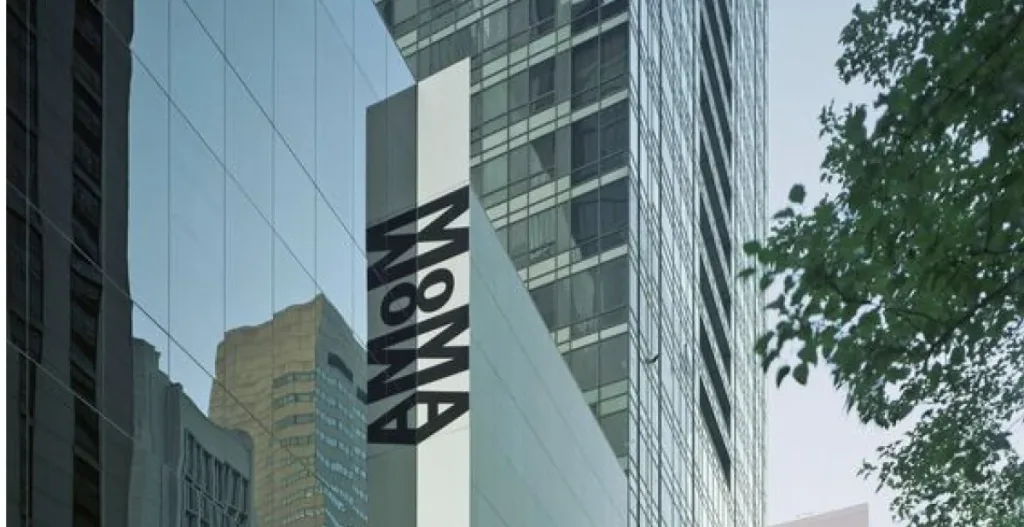
The American Museum of Natural History
Nestled in the heart of New York City’s Upper West Side, the American Museum of Natural History (AMNH) stands as a beacon of scientific exploration, artistic expression, and cultural enrichment. Established in 1869, the museum has evolved into one of the world’s preeminent institutions dedicated to the study and appreciation of the natural world. The AMNH stands as a testament to human curiosity and the desire to understand the world we inhabit. With its rich history, captivating art, stunning architecture, cultural significance, and prime location, it continues to be a beloved institution that invites visitors of all ages to embark on a journey of exploration and discovery, both within its walls and in the natural world beyond.
History
The AMNH’s rich history is as fascinating as the exhibits it houses. Founded by a group of prominent scientists, educators, and philanthropists, including Theodore Roosevelt Sr., the museum aimed to promote the understanding of natural history through research, education, and exhibitions. Over the years, the museum has played a pivotal role in scientific discovery, with researchers and curators making groundbreaking contributions to fields such as paleontology, anthropology, and astrophysics.
Art and Exhibitions
While the museum is celebrated for its scientific collections, it also embraces art as an essential element of its mission. Visitors encounter artistry in the meticulously crafted dioramas that bring ecosystems to life, in the detailed sculptures of extinct creatures, and in the breathtakingly beautiful minerals and gems on display. These artistic elements not only enhance the educational experience but also serve as a testament to the beauty of the natural world. One of the most famous artistic features of the AMNH is the Bernard Family Hall of North American Mammals, where lifelike dioramas transport visitors to the wilderness of North America. Each diorama is a meticulously crafted masterpiece, showcasing not only the animals but also their habitats in exquisite detail.
Architecture
The architecture of the American Museum of Natural History is an integral part of its charm. The main building, designed by the firm J. Wrey Mould, is a stunning example of neo-Romanesque architecture. Its grand entrance features massive columns and a magnificent facade adorned with intricate sculptures depicting various creatures from the natural world. Inside, the museum’s architecture continues to captivate with its soaring spaces, dramatic staircases, and beautifully designed galleries. The Rose Center for Earth and Space, an addition to the museum designed by architect James Stewart Polshek, is a modern masterpiece featuring a massive glass cube enclosing the Hayden Planetarium. Its unique architectural design has earned it recognition as an iconic symbol of the museum.
Cultural Significance
The AMNH is more than a repository of knowledge; it is a cultural institution that enriches the lives of millions. Through its exhibits, educational programs, and outreach initiatives, it fosters a sense of wonder, curiosity, and respect for the natural world. The museum is dedicated to inclusivity, striving to make its exhibits and resources accessible to people of all backgrounds and ages. In popular culture, the AMNH has left an indelible mark, inspiring countless books, films, and television series. It is also known for hosting special events, lectures, and temporary exhibitions that delve into a wide range of topics, from biodiversity and evolution to climate change and space exploration.
Location
The American Museum of Natural History is ideally situated on the Upper West Side of Manhattan, overlooking Central Park. Its address is the American Museum of Natural History Central Park West at 79th Street, New York, NY 10024, USA. This prime location allows visitors to combine a visit to the museum with a leisurely stroll through the iconic Central Park or explore other nearby attractions, such as the Metropolitan Museum of Art and the Guggenheim Museum.
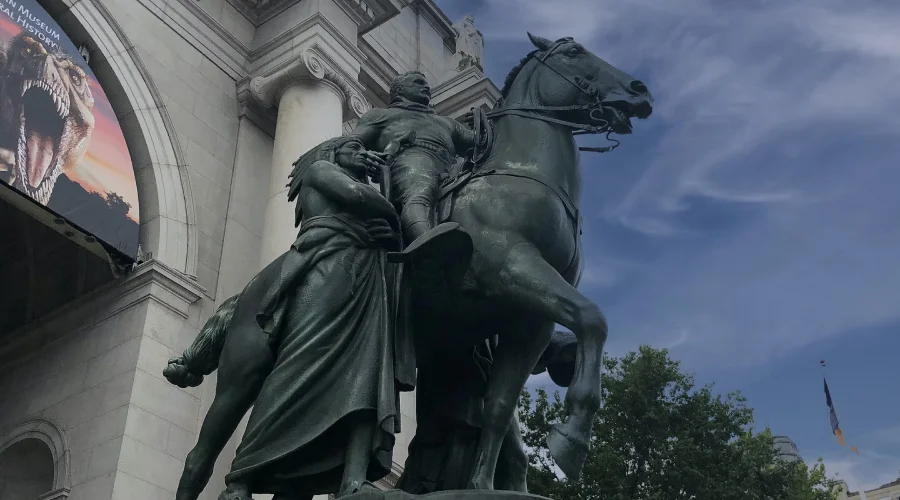
The Whitney Museum of American Art
Nestled in the vibrant neighborhood of the Meatpacking District in New York City, the Whitney Museum of American Art stands as a testament to the rich tapestry of American creativity and artistic expression. Founded in 1930 by Gertrude Vanderbilt Whitney, the museum has become an emblematic institution, dedicated to showcasing the diversity and dynamism of American art.
History
The Whitney Museum of American Art owes its existence to the vision and passion of its founder, Gertrude Vanderbilt Whitney. An artist and patron of the arts, Whitney recognized the need to champion American artists at a time when European art dominated the American art scene. In 1931, she donated her personal collection of modern American art to establish the museum, setting the stage for a legacy that would champion American artists for generations to come.
Art and Exhibitions
The Whitney is renowned for its impressive collection of American art, spanning the 20th and 21st centuries. Its vast holdings include paintings, sculptures, drawings, photographs, and new media works. Visitors can explore the evolution of American art, from early 20th-century realism to contemporary and experimental forms. One of the museum’s signature features is its commitment to presenting the work of living artists. The Whitney Biennial, a renowned exhibition held every two years, serves as a barometer of contemporary American art, showcasing emerging talent and addressing important social and cultural issues.
Architecture
The Whitney’s current home, designed by architect Renzo Piano and opened in 2015, is a masterpiece of contemporary architecture. The building’s design is characterized by its striking asymmetry, outdoor terraces, and expansive glass windows that offer stunning views of the city and the Hudson River. The architecture itself becomes part of the museum’s experience, seamlessly blending with the art within.
Culture and Education
Beyond its galleries, the Whitney fosters a culture of engagement and learning. It offers a robust program of lectures, workshops, and events that encourage visitors to explore and understand American art in depth. The museum’s educational initiatives extend to schools and community groups, promoting access to the arts for all. The Whitney Museum has played a pivotal role in shaping the discourse around American art. It has provided a platform for artists who might have otherwise been overlooked and has been a beacon for those seeking to understand the complexities of American identity and society. Its exhibitions and collections reflect the ever-evolving American experience, addressing issues of race, gender, and identity.
Location
The Whitney Museum of American Art’s location is as vibrant as the art it houses. It is situated in the Meatpacking District of Manhattan Whitney Museum of American Art, 99 Gansevoort Street, New York, NY 10014, USA. Its proximity to the High Line, a linear park built on a historic freight rail line, allows visitors to combine their museum visit with a leisurely stroll through this iconic urban green space.
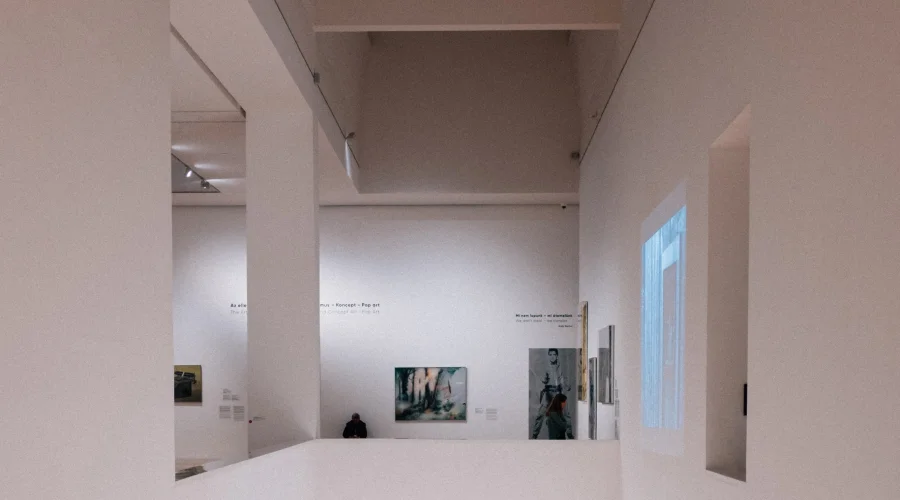
The Museum of the City of New York
Nestled on the Museum Mile of Manhattan’s Upper East Side, the Museum of the City of New York (MCNY) stands as a captivating window into the history, art, culture, and architecture of the city that never sleeps. Founded in 1923, the museum has evolved into a vital institution dedicated to preserving the rich heritage of New York City and celebrating its ever-evolving identity. This article offers a journey through the history, art, architecture, culture, and location of the Museum of the City of New York.
The Museum of the City of New York stands as a treasure trove of historical treasures and a vibrant cultural institution. With its rich history, diverse art collections, elegant architecture, commitment to culture and education, and prime location, it continues to inspire visitors to delve deeper into the compelling story of New York City, offering a profound appreciation for its past, present, and future.
History
The MCNY was established by Henry Collins Brown, a visionary historian and curator, with the mission to collect, preserve, and present the history of New York City. Over the decades, the museum has grown exponentially, amassing an extensive collection that showcases the city’s development from a Dutch trading post to a global metropolis.
Art and Exhibitions
While the museum primarily focuses on the history of the city, it also boasts a remarkable collection of art and artifacts that provide insights into New York’s cultural evolution. Visitors can explore a diverse range of art, including paintings, photographs, decorative arts, and textiles, reflecting the city’s artistic vibrancy and innovation. One of the museum’s standout features is its rotating exhibitions, which delve into various aspects of New York’s history, culture, and contemporary issues. These exhibitions often highlight lesser-known stories and communities that have contributed to the city’s unique tapestry.
Architecture
The MCNY’s historic building is a work of art in itself. Designed by renowned architect Joseph H. Freedlander and completed in 1932, the building reflects a blend of Colonial Revival and Georgian architectural styles. Its elegant facade features neoclassical details, and the interior boasts grand spaces, including a marble rotunda, adorned with murals that pay tribute to the city’s history.
Culture and Education
The museum is a cultural hub that actively engages with the city’s diverse communities. Through educational programs, lectures, panel discussions, and special events, the MCNY fosters an understanding of New York’s past and present. It aims to inspire visitors to connect with the city’s history and culture on a personal level. The MCNY is more than a repository of historical artifacts; it is a living testament to New York’s dynamic and ever-changing identity. It highlights the stories of immigrant communities, civil rights movements, artistic innovations, and social changes that have shaped the city. Its exhibitions often explore themes of urban development, environmental sustainability, and the challenges and opportunities that New York faces.
Location
The Museum of the City of New York is ideally situated in the Upper East Side of Manhattan: Museum of the City of New York, 1220 Fifth Avenue, New York, NY 10029, USA. Its location allows visitors to explore the cultural richness of the Upper East Side and Central Park while providing a glimpse into the neighborhoods that have defined the city’s history.
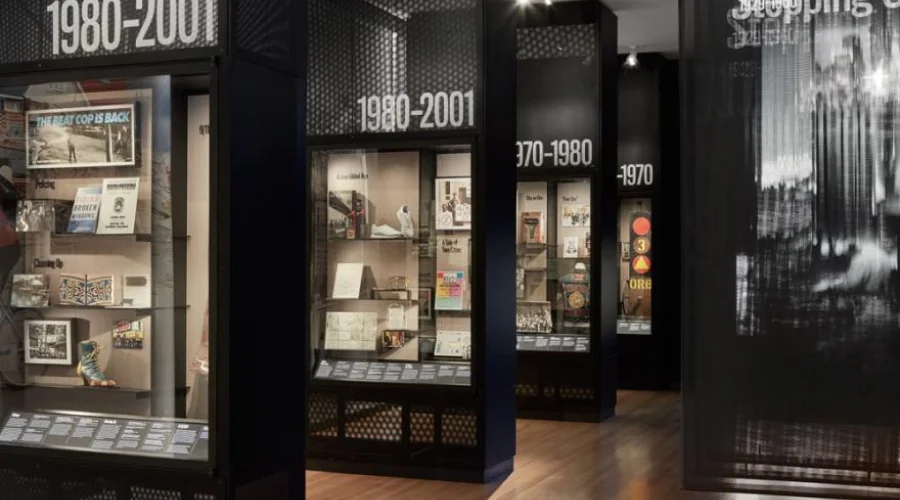
The Brooklyn Museum
Nestled within the vibrant borough of Brooklyn, The Brooklyn Museum stands as a testament to the rich tapestry of human history, artistic creativity, and cultural diversity. Founded in 1895, this esteemed institution has evolved into one of the city’s premier cultural centers, attracting visitors from around the world. In this article, we embark on a journey through the history, art, architecture, culture, and location of The Brooklyn Museum.
The Brooklyn Museum is more than just a repository of art; it is a dynamic cultural force that celebrates the rich tapestry of human creativity and diversity. With its illustrious history, diverse art collection, architecturally striking buildings, cultural significance, and central location, it continues to be a beacon of culture and inspiration in Brooklyn and beyond. A visit to The Brooklyn Museum is an invitation to explore the world’s art, culture, and history in a dynamic and engaging setting.
History
The Brooklyn Museum has a storied history dating back to the late 19th century. It was established to provide a cultural and educational hub for the residents of Brooklyn, which was an independent city at the time. Throughout its existence, the museum has played a pivotal role in fostering artistic and cultural appreciation among its diverse community.
Art and Exhibitions
At the heart of The Brooklyn Museum lies an extraordinary collection of art spanning diverse cultures and epochs. Its holdings encompass everything from ancient Egyptian artifacts to contemporary works by emerging artists. Visitors can explore masterpieces by renowned artists such as Edward Hopper, Georgia O’Keeffe, and Norman Rockwell. One of the museum’s standout features is its commitment to showcasing underrepresented voices and perspectives. It actively collects and exhibits works that engage with contemporary social and political issues, ensuring that its galleries remain dynamic and relevant.
Architecture
The Brooklyn Museum’s main building, designed by renowned architect McKim, Mead & White, is a work of art in itself. Its Beaux-Arts façade and grand entrance staircase make a striking first impression. Inside, the soaring Great Hall and elegant galleries provide a fitting backdrop for the art and cultural treasures on display. The museum’s glass pavilion, designed by Polshek Partnership Architects and opened in 2004, offers a contemporary contrast to the historic main building. This addition has expanded the museum’s exhibition space and added a modern architectural element to its identity.
Culture and Education
The Brooklyn Museum is a vibrant cultural center, offering a diverse array of educational programs, lectures, performances, and workshops. It actively engages with its community and fosters a sense of cultural exchange and dialogue. Its commitment to inclusivity is reflected in its efforts to make art and culture accessible to all. As one of the country’s leading cultural institutions, The Brooklyn Museum plays a vital role in celebrating the city’s diverse cultural heritage. It explores themes of identity, social justice, and global interconnectedness through its exhibitions and programs. It is not only a repository of art but also a catalyst for cultural conversations and understanding.
Location
The Brooklyn Museum is ideally located in the heart of Brooklyn: The Brooklyn Museum, 200, Eastern Parkway, Brooklyn, NY 11238, USA. Its proximity to Prospect Park, the Brooklyn Botanic Garden, and other cultural attractions makes it a central hub for those exploring the borough’s cultural offerings.
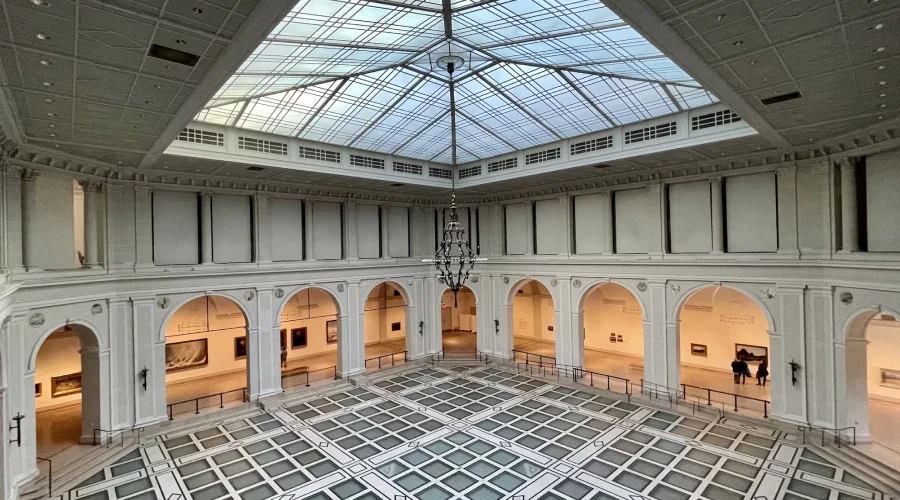
The Intrepid Sea, Air & Space Museum
Located on the Hudson River in the heart of New York City, the Intrepid Sea, Air & Space Museum is a living testament to human ingenuity, courage, and exploration. Housed on the USS Intrepid, an aircraft carrier turned museum, this institution offers visitors a unique opportunity to delve into the history of sea, air, and space exploration. In this article, we embark on a journey through the history, art, architecture, culture, and location of the Intrepid Sea, Air & Space Museum.
The Intrepid Sea, Air & Space Museum is a voyage through history, innovation, and human achievement. With its rich history, unique collection of artifacts, impressive naval architecture, cultural significance, and prime location, it continues to inspire and educate visitors of all ages. A visit to the Intrepid Museum is not just a walk through history; it is an immersive experience that honors the past and ignites curiosity about the future of exploration and discovery.
History
The USS Intrepid, CV-11, is a storied aircraft carrier that served in World War II and the Korean War before being decommissioned. In 1982, the ship found a new lease on life as the Intrepid Sea, Air & Space Museum. The museum’s mission is to honor the men and women who served aboard the ship and to inspire future generations through the exploration of history, science, and technology.
Art and Exhibitions
While the primary focus of the Intrepid Museum is on military history and technology, it also features a unique collection of aircraft, spacecraft, and other artifacts that reflect the achievements of aviation and space exploration. Visitors can explore the flight deck, which houses an impressive array of historic aircraft, including fighter jets, helicopters, and even the space shuttle Enterprise. One of the museum’s most iconic artifacts is the British Airways Concorde, which resides on the pier adjacent to the Intrepid. The Concorde is a symbol of supersonic flight and technological innovation.
Architecture
The USS Intrepid itself serves as a remarkable example of naval architecture and engineering. Its imposing flight deck, sprawling hangar bay, and intricate systems provide a glimpse into the challenges and complexities of operating an aircraft carrier. The museum also includes the Space Shuttle Pavilion, a climate-controlled facility that houses the space shuttle Enterprise, offering visitors an up-close look at this historic spacecraft.
Culture and Education
The Intrepid Museum is not only a repository of military history but also a hub for education and cultural exchange. It hosts educational programs, lectures, and special events that aim to engage visitors of all ages in the worlds of science, technology, engineering, and mathematics (STEM).
The museum’s educational initiatives include immersive experiences, such as the Virtual Voyages program, which allows students to explore the ship and its history through virtual reality technology. The Intrepid Sea, Air & Space Museum holds cultural significance as a tribute to the men and women who have served in the military and as a symbol of American innovation and exploration. It explores themes of bravery, discovery, and the human spirit’s capacity to overcome challenges.
Location
The Intrepid Sea, Air & Space Museum is ideally situated on the Hudson River, adjacent to Midtown Manhattan: Intrepid Sea, Air & Space Museum, Pier 86, W 46th St & 12th Ave, New York, NY 10036, USA. Its location provides visitors with stunning views of the Manhattan skyline and easy access to other nearby attractions, such as Times Square and the Hudson River Park.
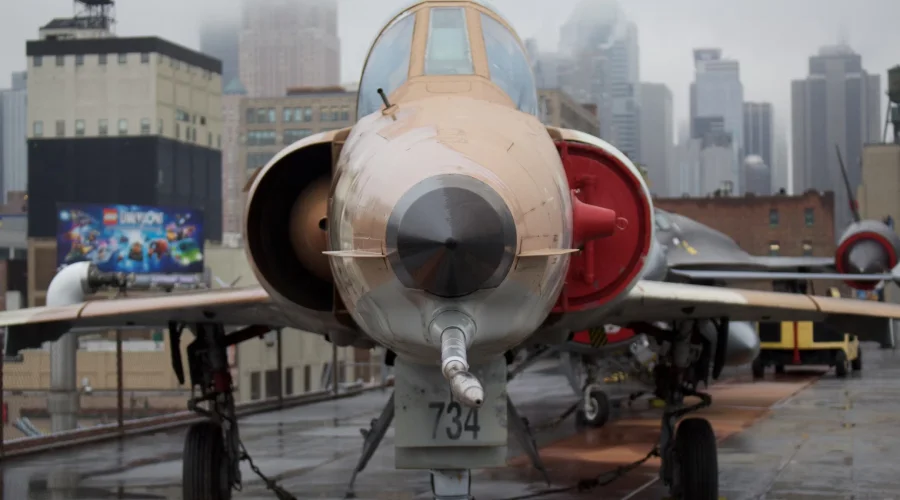
The Museum of Jewish Heritage
Situated at the southern tip of Manhattan, the Museum of Jewish Heritage – A Living Memorial to the Holocaust stands as a poignant reminder of the indomitable human spirit and the need to preserve the memory of the past. Founded in 1997, this museum is dedicated to honoring the memory of Holocaust victims, celebrating Jewish heritage, and educating future generations about the enduring lessons of history. In this article, we delve into the history, art, architecture, culture, and location of the Museum of Jewish Heritage.
The Museum of Jewish Heritage is a solemn and vital institution that honors the memory of Holocaust victims and celebrates the rich tapestry of Jewish heritage. With its commitment to history, art, architecture, culture, and location, it continues to serve as a powerful reminder of the importance of remembrance and the enduring values of tolerance and compassion. A visit to the Museum of Jewish Heritage is an invitation to reflect on the past, learn from history, and strive for a more just and compassionate future.
History
The Museum of Jewish Heritage was established to serve as a living memorial to the Holocaust and its six million Jewish victims. Its founding was driven by the need to ensure that the memory of the Holocaust would not fade with time and that its lessons would continue to resonate with future generations. The museum’s mission is to educate, inspire, and empower individuals to confront hatred, prevent genocide, and promote human dignity.
Art and Exhibitions
While the museum’s primary focus is on Holocaust history and remembrance, it also houses a collection of art, artifacts, and documents that reflect the vibrant and diverse history of Jewish heritage. Visitors can explore exhibitions that cover a wide range of topics, from the personal stories of Holocaust survivors to the broader historical context of Jewish life and culture. One of the museum’s powerful exhibitions is the “Core Exhibition,” which provides a comprehensive overview of Jewish life before, during, and after the Holocaust. It includes personal testimonies, photographs, and artifacts that convey the enormity of the Holocaust’s impact.
Architecture
The museum’s building, designed by architect Kevin Roche, is a striking example of modern architecture. Its cube-like structure is clad in glass and steel, providing a sense of transparency and openness. The building’s design reflects the idea of both remembrance and renewal, with a focus on creating a space for reflection and learning. The museum’s location, overlooking New York Harbor and the Statue of Liberty, adds a powerful layer of symbolism to its architecture. It evokes the idea of hope and refuge for those who sought a new beginning in America.
Culture and Education
The Museum of Jewish Heritage is a hub for cultural and educational activities related to Jewish history, heritage, and Holocaust remembrance. It offers a range of programs, including lectures, films, performances, and workshops, that engage visitors in exploring the complexities of Jewish identity and history.
The museum’s education initiatives include resources for teachers and students to facilitate discussions about the Holocaust and its broader historical context. Its commitment to education extends to partnerships with schools and community organizations. The Museum of Jewish Heritage holds profound cultural significance as a living testament to the resilience of the Jewish people and the importance of remembrance and education. It serves as a beacon of hope, promoting the values of tolerance, respect, and human dignity in the face of hatred and prejudice.
Location
The Museum of Jewish Heritage is situated in Lower Manhattan, near Battery Park: Museum of Jewish Heritage – A Living Memorial to the Holocaust, 36 Battery Place, New York, NY, 10280, USA. Its location offers visitors the opportunity to explore nearby landmarks, including the Statue of Liberty and Ellis Island, which are deeply connected to the immigrant experience.
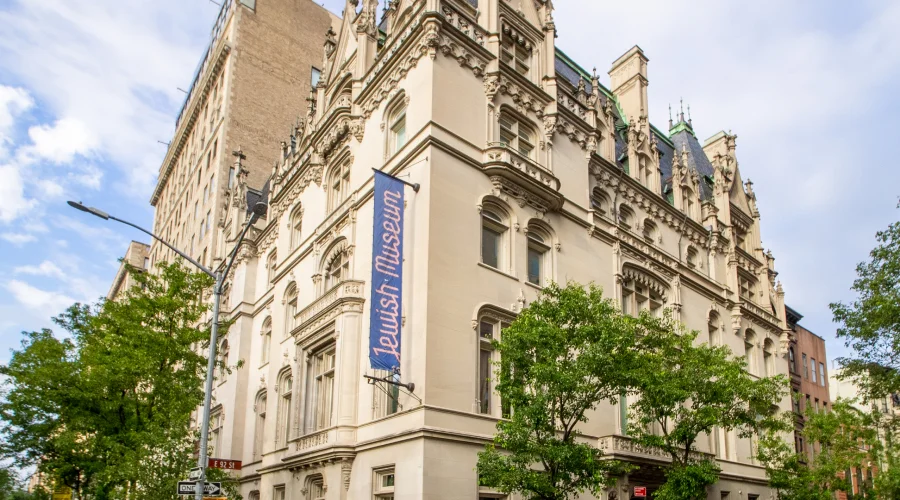
Conclusion
In conclusion, New York City’s museums are a treasure trove of cultural riches, offering a diverse array of experiences for art aficionados, history buffs, and curious minds alike. From the iconic Met and MoMA to the more specialized institutions like the Rubin Museum of Art and the Museum of Jewish Heritage, these museums collectively provide a deep and immersive journey into the world of art, history, science, and culture. Whether you’re a local resident or a visitor, exploring these museums is an enriching way to connect with the city’s rich heritage and the global tapestry of human creativity and knowledge. New York City’s cultural treasures are not just attractions; they are windows into the past, present, and future of humanity, making them must-see destinations for anyone seeking intellectual and artistic inspiration.


